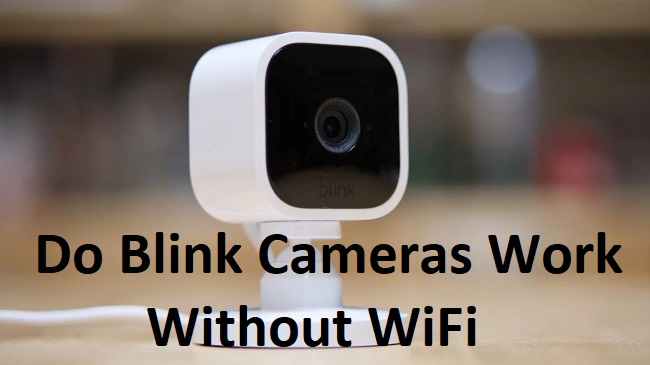Blink cameras have gained popularity for their ease of use and wireless functionality. While they are typically designed to work with Wi-Fi networks, there are instances where Blink cameras can still function without an active Wi-Fi connection.
In this SEO-optimized, detailed article, we will explore the reasons why Blink cameras can work without Wi-Fi, the concept of offline recording, and the compatibility of Blink cameras with cellular networks.

Contents
Blink Cameras and Wi-Fi Connectivity
Blink cameras are primarily designed to be used with Wi-Fi networks for optimal performance and convenience.
When connected to a Wi-Fi network, Blink cameras can transmit live footage, receive commands from the Blink system, and enable features such as remote access and notifications.
However, there are situations where Blink cameras can still operate even without an active Wi-Fi connection.
Functioning without Wi-Fi: Offline Recording
Blink cameras have built-in storage capabilities that allow them to record and store footage locally on the camera itself.
This means that even without an active Wi-Fi connection, the cameras can continue to record and save videos onto their internal storage.
The recorded footage will be available for viewing and retrieval once the cameras are reconnected to a Wi-Fi network.
Camera Offline but Still Recording
In certain cases, a Blink camera may be offline and disconnected from the Wi-Fi network, yet it can continue recording events that trigger its motion detection.
This is possible because the camera operates independently, relying on its internal storage and motion sensors to capture and save footage.
However, without an active Wi-Fi connection, the camera cannot transmit live video or receive remote commands until it is reconnected.
Cellular Compatibility with Blink Cameras
By default, Blink cameras are not designed to work directly with cellular networks. They require a Wi-Fi connection to communicate with the Blink system and enable remote access.
However, there are workarounds to connect Blink cameras to cellular networks for certain scenarios.
- Wi-Fi Hotspot: If you have a cellular device that supports Wi-Fi hotspot functionality, you can connect your Blink cameras to the hotspot network to enable limited functionality. This allows the cameras to connect to the internet through the cellular data network, providing remote access and notifications. Keep in mind that data usage may apply, so it’s important to consider any associated costs and data caps.
- Third-Party Cellular Routers: There are third-party cellular routers available in the market that can connect to cellular networks and provide Wi-Fi connectivity for devices, including Blink cameras. These routers act as intermediaries, converting the cellular signal into a Wi-Fi network that the cameras can connect to, allowing for remote access and functionality.
In Conclusion
Blink cameras are primarily designed to work with Wi-Fi networks, enabling live video streaming, remote access, and notifications. However, they can still function without an active Wi-Fi connection by relying on offline recording capabilities.
While Blink cameras do not have native cellular compatibility, it is possible to connect them to cellular networks through workarounds such as Wi-Fi hotspots or third-party cellular routers.
These solutions enable limited functionality and remote access using cellular data networks. Understanding these aspects of Blink cameras allows users to adapt and utilize the cameras in various scenarios, even when Wi-Fi connectivity is not readily available.






























